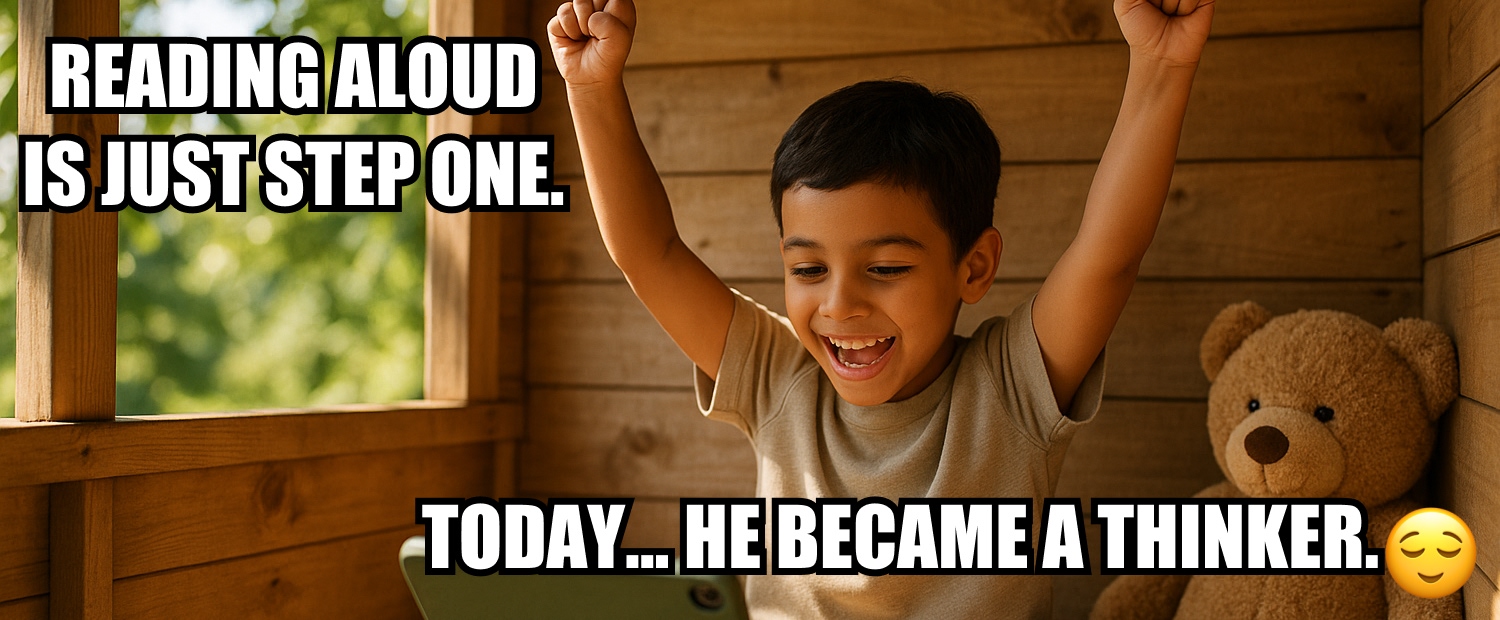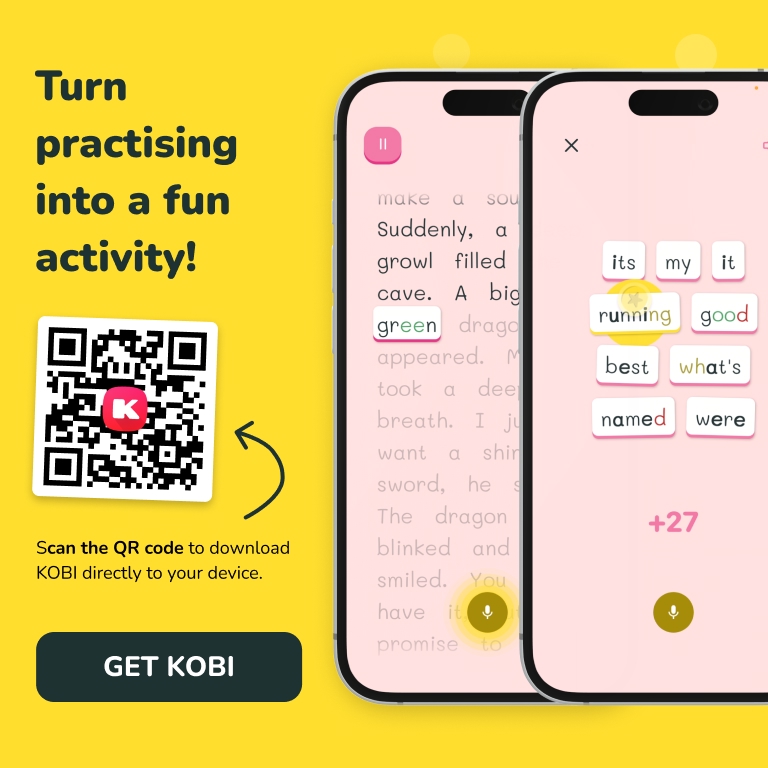Summary: What You’ll Learn in This Article
- Why reading aloud is just the beginning
- How to nurture critical thinking and comprehension at home
- The Science of Reading’s take on deep reading skills
- How KOBI’s features help build engaged, thoughtful readers
- Reflection prompts to spark meaningful reading conversations
Ever Finish a Story and Wonder, “Did That Sink In?”
Your child just read aloud beautifully – but when you ask, “What happened?” you get a shrug.
That’s because decoding words and understanding them are two different skills. Thinking readers go beyond the text: they predict, connect, visualize, and question. And the good news? You can help build those skills right at home.

Why Comprehension Is the Real Goal
The Science of Reading reminds us that:
- Active comprehension happens when kids build meaning as they read
- Inferencing and visualization help them fill in gaps between the lines
- Emotional and personal connections make stories stick
Research shows that asking questions, prompting predictions, and encouraging reflection leads to deeper understanding and better retention. When kids think about the story, they ‘own’ it.

How KOBI Helps Kids Become Thinking Readers
Step 1: Snap-a-Story for Personal Connection
Your child takes a photo and KOBI turns it into a short, custom story. This ownership draws them in before they even read the first word.

Step 2: Listen, Then Read Together
Start with “Listen & Read” so they can hear fluent storytelling. Then switch to Together Mode and take turns reading – pausing to ask, “What do you think will happen next?”
Step 3: Pictionary for Word Understanding
When a tricky word appears, tapping it reveals a bright, die-cut image plus a kid-friendly definition and example sentence. Ask: “How would you use this word?”
Step 4: ThinkTalk for Reflection
At the end of the story, KOBI’s voice-guided ThinkTalk prompts get kids talking about what they read – in their own words. This reinforces comprehension without feeling like a quiz.
Step 5: Revisit and Notice More
Re-read a Snap-a-Story tomorrow and ask: “Did you notice anything new this time?” Layering meaning over multiple reads deepens understanding.
Tips for Parents: Building Thinking Readers at Home
- Ask open-ended questions: “Why do you think that happened?”
- Make predictions together: “What might happen next?”
- Connect stories to real life: “Has anything like that happened to you?”
- Use Pictionary as a launchpad: “What does that word mean to you?”
- Keep it light: Thinking is about curiosity, not perfection
Why Homeschoolers Love KOBI
- Encourages comprehension without worksheets
- Promotes meaningful, child-led conversations
- Works for all reading levels
- Combines audio, visual, and verbal supports

Want to Raise a Thinker? Start With a Story
Building a thinking reader doesn’t mean having all the answers – it means asking the right questions and letting curiosity lead. KOBI makes that easy, giving you built-in tools to help your child connect with stories on a deeper level.


